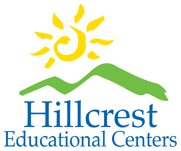HEC is rooted in a solid tradition of providing residential, educational services for hard to place children and adolescent with special needs. In all its services, clinical, residential, educational, spiritual and medical, Hillcrest utilizes an interdisciplinary approach in the treatment of children and adolescents. The treatment structure is safe, predictable, consistent and supportive in order to permit students to fully benefit from the services offered.
Youth & Family Involvement: Families are a critical part of the child’s treatment team and are encouraged to actively participate in the development of the treatment plan. Treatment plans are developed with the parent or families input, perspectives, and goals. Likewise, youth are encouraged to participate in treatment planning discussions with their family, clinician, and staff. They are encouraged to attend their treatment planning meetings. Youth’s voice and choice are honored throughout the treatment planning process. Treatment plans include clear, straight forward language that reflects the youth and family’s individualized treatment needs and goals.
A. Treatment Team Meeting and Process
- The Treatment Team meeting is chaired by a Campus Administrator who functions as the Team Leader. With suggestions generated by administrative, educational and residential staff, and observing the mandatory schedule of service plan reviews, the Administrator creates an agenda for each Team meeting. Agenda items are assigned to various team members who are responsible for follow-through services or tasks. The following functions and persons responsible for each are typical of the varied components of these meetings and Team functioning.
The Clinician reviews students’ progress related to individual and group therapies, discusses skills development in all areas of program with staff attending the meeting, discusses plans for student visitation, gathers feedback from staff about discharge readiness, and provides consultation to staff regarding clinical interventions.
The residential Youth Development Professional represents not only themselves but the interests of their shift, and in turn, ensures that information is communicated to other primary staff.
The Teacher, Teaching Assistant, and other academic representatives offer information related to the students’ academic and classroom functioning. The academic representative is also responsible for keeping the rest of the teachers and academic staff informed about particular students and the Team as a whole. The academic representative will also be responsible for bringing agenda items related to the IEP to team meeting.
In addition to attending the Team Meeting, the Supervisor and Asst. Supervisor ensure coverage for staff participating in the meeting and ensure that all assigned YDPs are present. They provide a broad perspective on student care and management; record administrative changes for students or the Team in supervisor’s log; and assigns staff to follow all recommendations by the Team.
The Nurse updates Team concerning medical treatment, medication changes, special diet requirements, and physical concerns. They also inform the Team of potential effects or side effects of medication/physical condition and any upcoming medical appointments
The Program Administrator (i.e., Program Director, Assistant Program Director, Residential Coordinator, Education Director, , clinical administrators, Head Nurse), help to facilitate the Team meeting process; help to ensure that HEC policies and procedures are followed; and help to ensure that all disciplines are adequately represented and department members play appropriate roles.
B. Special & Emergency Team Meetings
- Special Team Criteria
a. Student is not in acute crisis, but Team wants to problem solve around particular behaviors and/or treatment issues.
b. Student is not compliant with medication.
c. Student is not participating in therapy.
d. Treatment Plan is not effective after review and amendment.
Participation: YDP-Day & Residential, Nursing, Clinical, Teacher or TA, Supervisor, Program Director, APD,
Notification: Psychiatrist, Clinical Director, Senior Vice President, Medical Director.
- Emergency Team Criteria
a. Student is in acute crisis.
b. Student is at high risk/danger to themselves or others.
c. Student is being considered for transfer to a more restrictive environment or emergency discharge.
Participation: YDP-Day & Residential, Nursing, Clinician, Clinical Director, Program Director or APD, Senior Vice President, Teacher & TA, Supervisor, or Assistant.
Notification: Psychiatrist, Medical Director.
- Protocols
a. The Program Director or designee will decide whether or not to schedule a special/emergency team meeting.
b. Emergency Team meetings should be conducted within 72 hours of the determination of the need for an Emergency Team meeting.
c. The Program Director or designee will notify all staff according to criteria listed above.
